Is it Dangerous to Go to a Game in the District?
If it is, the story is just a subplot in the larger struggles of the city
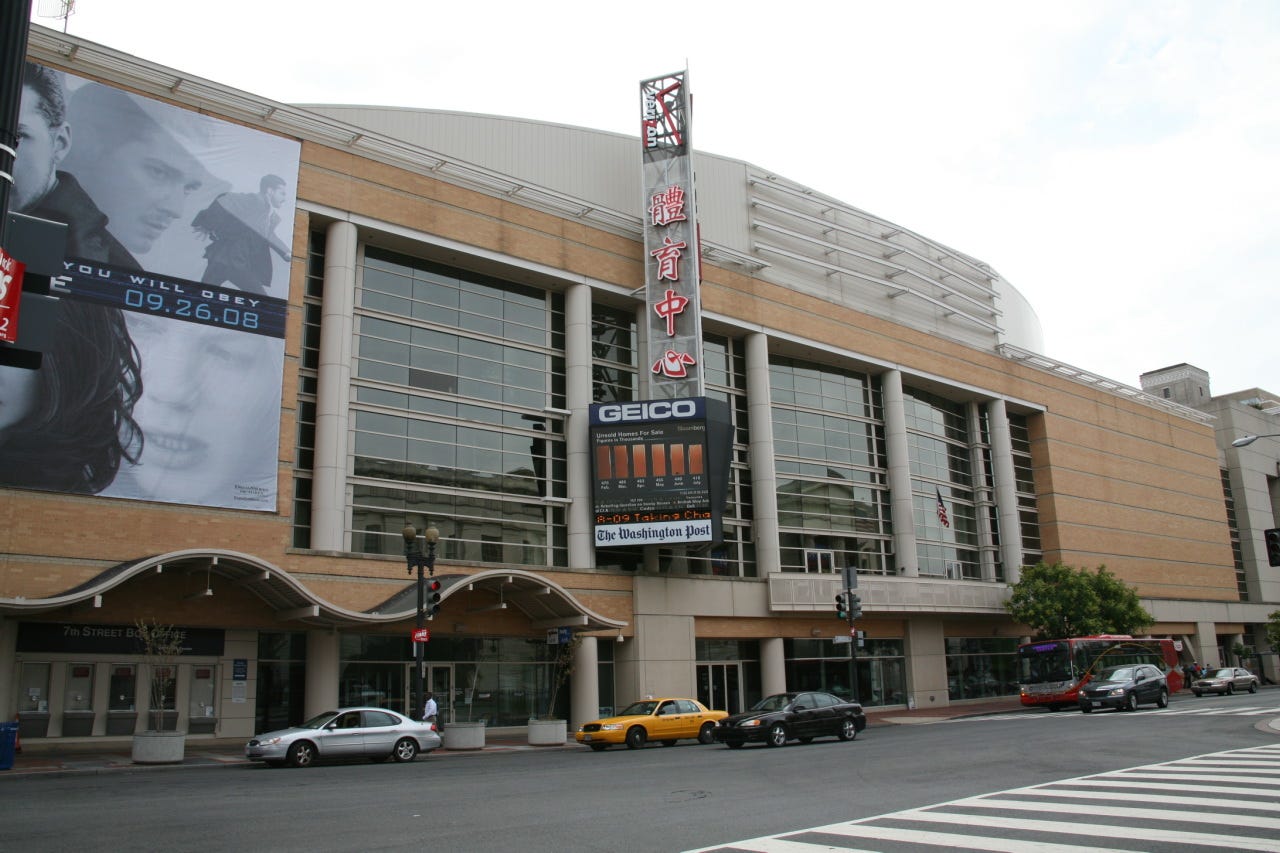
This piece from Axios D.C. by Cuneyt Dil caught my eye last Thursday.
Inside Washington’s pro sports world, there’s angst over crime. It’s leading Capital One Arena’s owners to beef up security, and businesses around Nationals Park to hire new patrol officers.
Why it matters: The District’s sports arenas are magnets for tens of thousands of Washingtonians and suburbanites, especially when there’s little other reason to be downtown — even if the Wiz are floundering and star players flee the Nats.
The piece notes that while a friend of Leonsis leaked the contents of a private conversation to Axios D.C., the Caps owner and his team at Monumental Sports have been careful to keep quiet about his concerns. That certainly tracks with the sober and deliberate manner he’s conducted himself in public as a professional sports owner. He’s concerned about the experience the fans in his arena enjoy (and keeps track of how they feel through regular surveys ticket holders get after every game), but he would never take his concerns public when he could share them privately with Mayor Muriel Bowser, someone that he knows well.
When you read a story in Washington, D.C., where that story appears and who tells it is almost as important as whether or not the story gets told at all. That this issue has surfaced on the pages of Axios D.C. and not the Washington Post (WaPo) is telling. For those who aren’t familiar with life “inside the Beltway,” Axios is a news website that was founded in 2016 to cater to the politically connected by packaging information in a “clear and concise format.” Since launch, they’ve created other verticals, including one that deals with local news, which is where you’ll find Axios D.C. By leaking this story to Axios D.C. and not the WaPo the news item gets to the people Leonsis cares about most in D.C. government without making waves the way it would in the WaPo.
Next, let’s talk about the reality of crime in the District, both yesterday and today. I’ve lived in the DMV for almost 40 years and over that time, the entire area is far safer than it was when I first arrived here, none more so than the District itself. Beginning in the 1980s, the crack epidemic took lives and destroyed poor black neighborhoods all over the District. It was the time of Rayful Edmond III. While Edmond and his crew terrorized the city, his influence ranged all over the East Coast. At the height of his power, Edmond’s activities even threatened to consume Georgetown University’s men’s basketball program.
During that era I clearly recall driving back to Washington on US 50 eastbound one Sunday afternoon. At the border with Maryland was a sign welcoming you to Washington, D.C. Spray painted on the sign was a warning: KEEP LOW.
But that was yesterday, and significant swaths of the city have been completely transformed, including the neighborhoods in Northwest and Southeast that the Caps, Wizards, Nationals and D.C. United call home. The changes were fueled by a variety of factors. There was the renewal of Pennsylvania Avenue. The expansion of Metro connected neighborhoods that were once only accessible by car, like the U Street corridor in upper Northwest. The election of Anthony Williams as D.C. Mayor, a man who took office vowing to attract 100,000 new residents to the city, helped the District put its financial house in order.
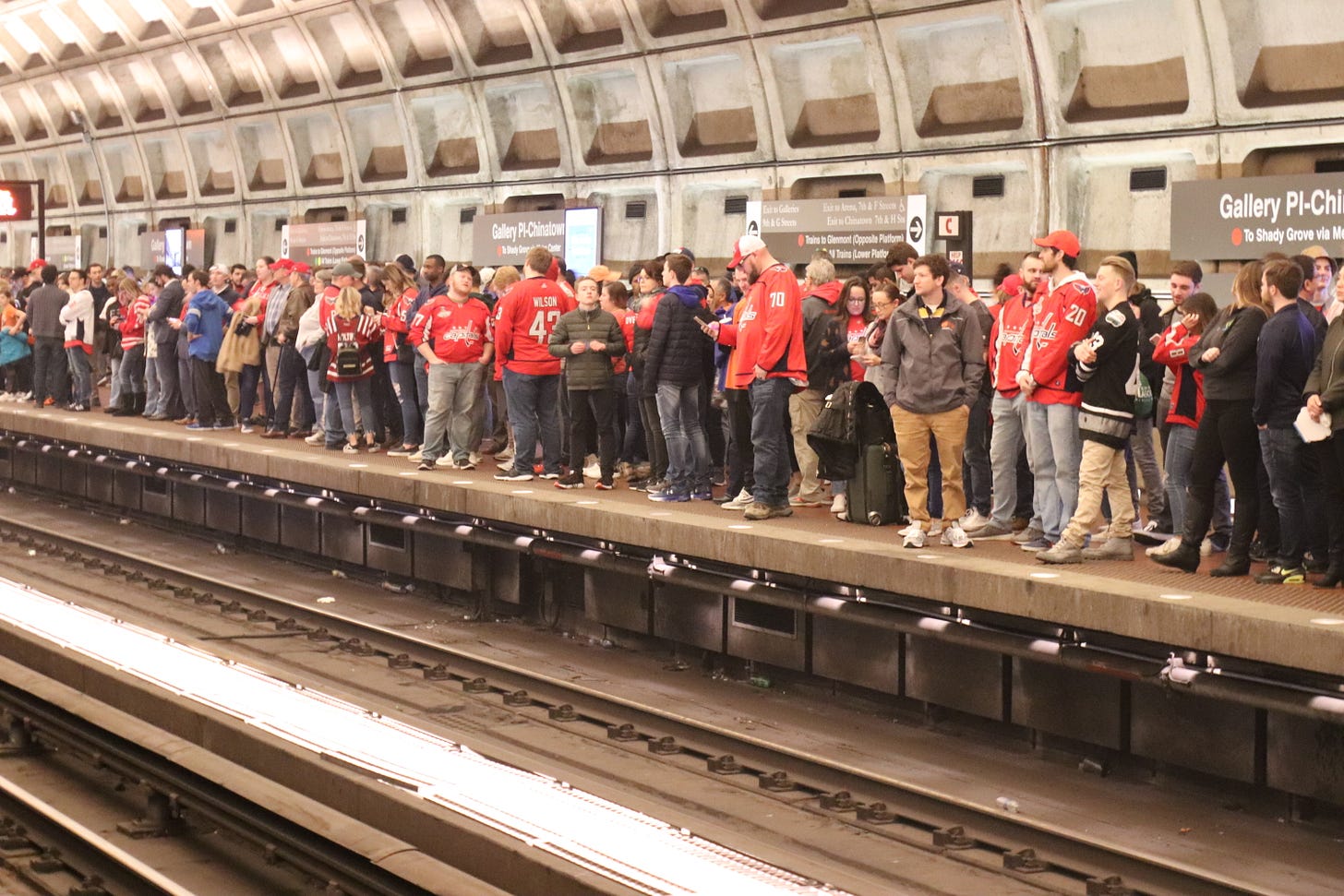
Then there was the rise of the national security state following the 9-11 attacks that led to so many taxpayer dollars being re-invested in the city. And it was super charged after the 2008 financial crisis and the election of President Barack Obama led a generation of talented young people to make a future in government and politics when a career on Wall Street was either impossible or too terrible to contemplate. The gentrification of the city has proceeded at full speed for more than 20 years and showed no sign of stopping until the dawn of the Pandemic in 2020.
And it’s the Pandemic, something that isn’t mentioned at all in the Axios D.C. piece that’s the real rub. In March 2020, everyone in an office in D.C. left in a rush over about 72 hours in the middle of March. While some government employees have returned to the District, many more have not, and others who have gone back to work regularly take advantage of liberal telework policies. I was downtown last Thursday for lunch, and while the area around the Capital One Arena isn’t the ghost town it was a year ago, the street traffic is still significantly reduced from what it was before the Pandemic. You can see it and feel it. You can smell it in the odor of marijuana which is apparent all day long. Things aren’t the same anymore and they might not be again.

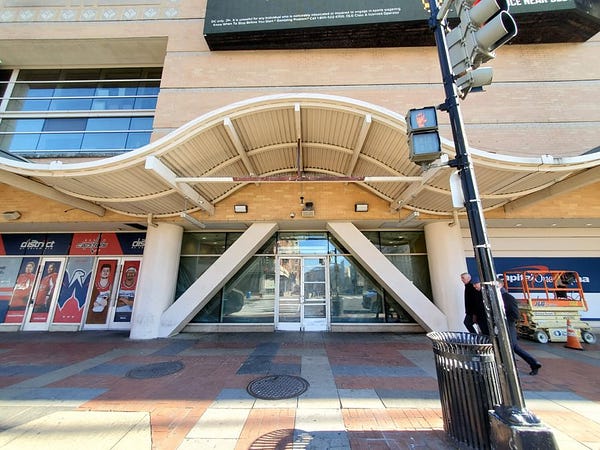
Many of the businesses I patronized over better than a decade I worked in the area are gone and the former locations are still shuttered. Union Station, located just a 5 minute walk from Capitol Hill, once a shining example of urban renewal when it was renovated in the 1980s is once again an object lesson in urban decay.
The trickle down effects have been fairly apparent. Sections of downtown have emptied out, the businesses that relied on servicing their employees closed up, emptying the city’s coffers as sales and property tax collections have collapsed. That’s money the District government desperately needs in order to fund essential city services like the police department.
That’s set up an interesting dynamic at the intersection of national and local politics. Normally, a District Mayor like Bowser wouldn’t openly challenge a Democratic President like Joe Biden, but that’s exactly what Bowser did during her inaugural speech back in January when she called on the White House to send government employees back to work.
The federal government represents one quarter of DC’s pre-pandemic jobs and owns or leases one third of DC’s office space.
We need decisive action by the White House to either get most federal workers back to the office most of the time or to realign their vast property holdings for use by the local government, by non-profits, by businesses and by any user willing to revitalize it.
America wins when the place where people come to join and change the world is buzzing. Buzzing with new graduates and interns, with the startup that has the big idea to meet with federal partners or the business travelers who are coming to Washington to get work done. And of course, with lobbyist(s) on Capitol Hill.
We’ve partnered with this White House successfully many times, I know we can do it again for what matters most.
Federal employees are a significant faction in Democratic party politics. The D.C. suburbs are the deepest of deep blue for a reason. Those employees, very understandably, came to enjoy the flexibility provided by working from home during the Pandemic and don’t want to return to what their working lives were like before.
Meanwhile, a House of Representatives controlled by the GOP did Mayor Bowser a solid by passing legislation ordering all federal employees back to the office. While it was a media win for the mayor, with Democrats in control of the Senate, the legislation is unlikely to get to the President’s desk. Which of course, is the irony of ironies.
So there’s the rub: thanks to the Pandemic, a downtown core that was once teeming with people is bereft of the activity that used to make the District’s economy hum. And it doesn’t take much imagination to understand that the trickle down impact of fewer jobs in downtown could lead to more crime. As long as folks continue to telework, this problem isn’t going to be resolved. And if the problem is eventually resolved, the course correction won’t happen quickly, which means the accommodations for increased security being made around Capital One Arena and Nationals Park will probably be in place for a while and cost a pretty penny.
While I might have given up my share of a Caps season ticket package, I have gone to a few games this season. And as I’ve gotten older, it’s hard not to notice how the calculus as to what feels safe can change. It’s one thing to not think about it when you’re running with your bros in your 20s. It’s another thing entirely when you’re with your wife and have a couple of kids in tow as you walk further and further from the arena to get to an underground garage to find your car and get home.
At the same time, it’s impossible not to sympathize with the mayor. While gentrification has improved the quality of life in the city overall, there are still predominantly black neighborhoods that struggle with crime. It’s easy to see how Mayor Bowser might not be enthusiastic about committing additional police protection to the area around Capital One Arena when other neighborhoods are dealing with situations that are fare more dire.
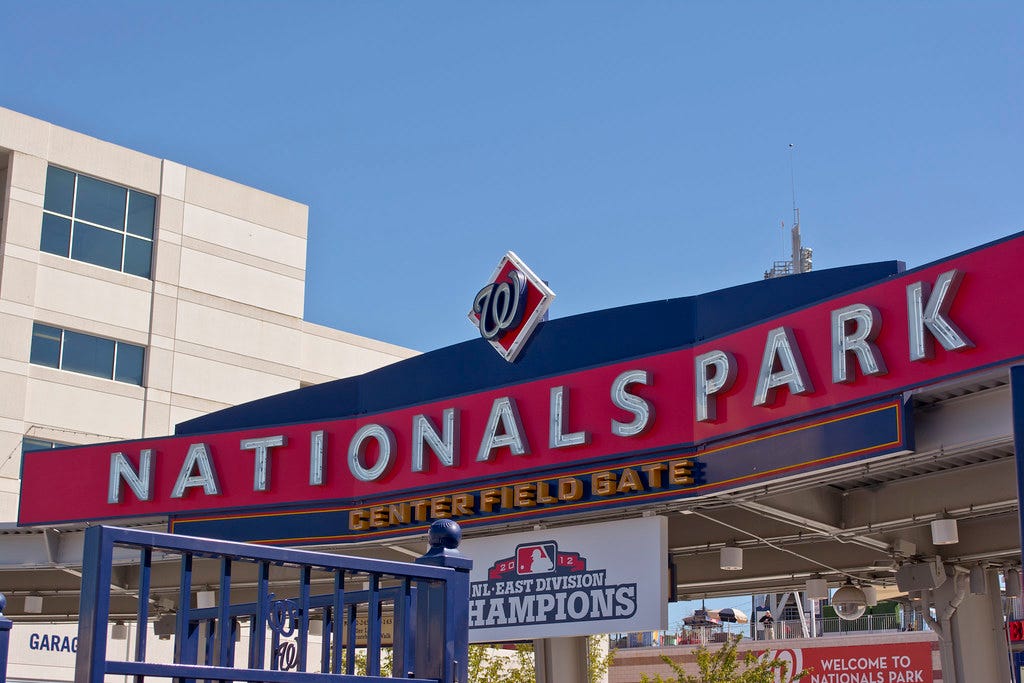
From the outside looking in, it certainly seems that way in the neighborhood in and around Nationals Park. It’s also important to remember that the neighborhood was the site of a shooting at the Washington Navy Yard in 2013 that left 12 dead and three more wounded. People around town haven’t forgotten that day and you could hardly blame them.
In March 2021, two teenagers killed an Uber Eats driver during an attempted carjacking. That crime seemed particularly horrific after video of the attack surfaced where one of the assailants can be heard complaining that she lost her phone inside the vehicle during the commission of the crime;
There was a shooting outside the ball park in July 2021 in the midst of a Nationals-Padres game that wounded three people. The shots were clearly audible inside the stadium and fans sheltered in place before being evacuated when the game was suspended;
In April 2022, four people were shot near the stadium less than an hour after a game between the Nationals and the New York Mets ended. Two of those who were shot were found at the Navy Yard Metro Station, which is normally teeming with fans heading home immediately after a game ends;
In October 2022, a man was shot to death outside the baseball park in what police described as a “targeted shooting.” One witness said that “10-15 rounds were fired” in an attack that took place in broad daylight, sending patrons at a nearby restaurant scrambling for cover.

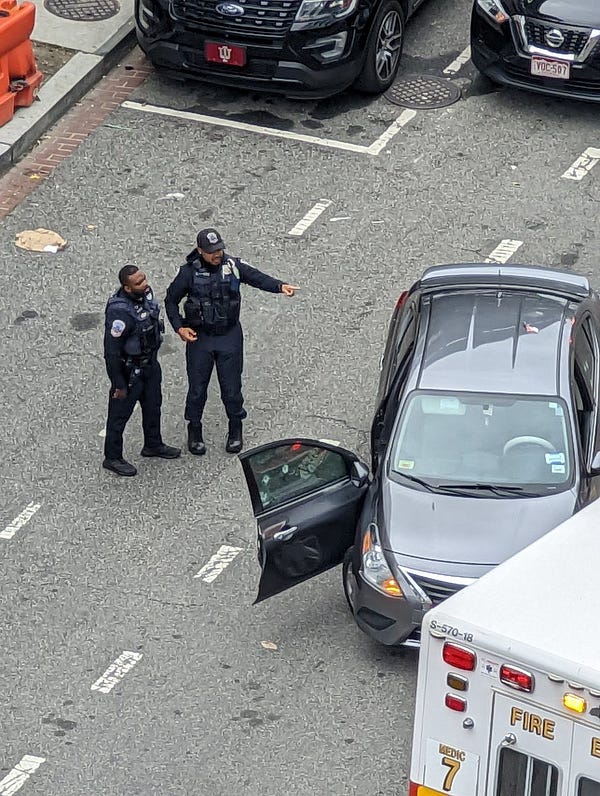
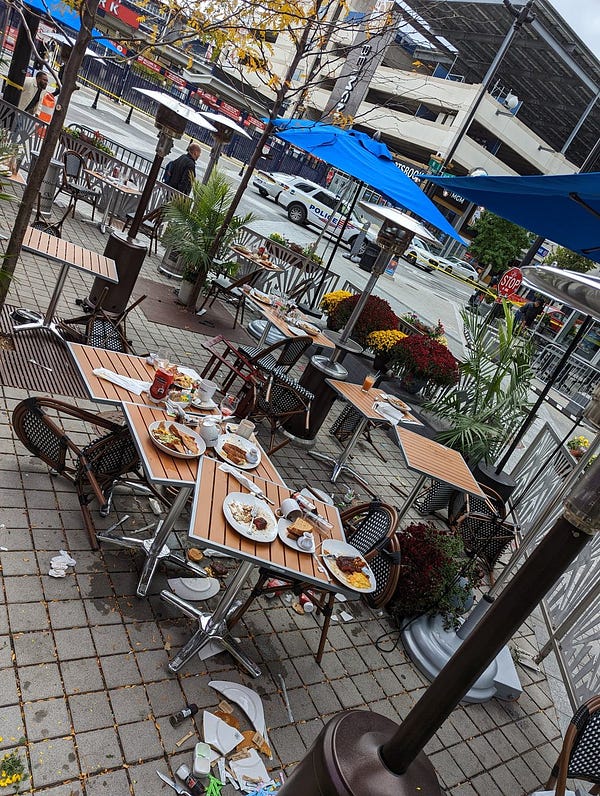
It was the last murder that put things in motion around Nationals Park. Merchants in the area mobilized the local Business Improvement District to raise $275,000 to hire off-duty police officers to patrol the area around the stadium. Bob Giamo, the founder of the Silver Diner restaurant chain, told Axios D.C. that it’s a model he’d encourage Leonsis to emulate at Capital One Arena.
He may not have a choice. According to media reports Leonsis is the frontrunner to purchase the Washington Nationals from the Lerner family. Like it or not, the city’s problems are his problems now too and fixing them is going to hit him in the wallet. And consider this: the next two Capitals seasons are going to be all about Alex Ovechkin’s assault on Wayne Gretzky’s NHL career goals record. That alone will keep the seats filled at Capital One Arena. But after that, the team will have to embark on a rebuild that we haven’t seen in these parts for two decades. And if you combine bad hockey with the perception that the neighborhood around the rink is dangerous, that string of consecutive sellouts will be in jeopardy.
The leak to Axios D.C. tells me that Leonsis may be running out of patience. I wonder if the powers that be at City Hall got the message.
Eric McErlain lives and works in the Washington, D.C. area. He blogged at Off Wing Opinion regularly from 2002-2009. In addition to writing at Off Wing, his work has appeared at The Sporting News, AOL FanHouse, NBC Sports.com, Deadspin, The Hockey Writers and Pro Football Weekly.



